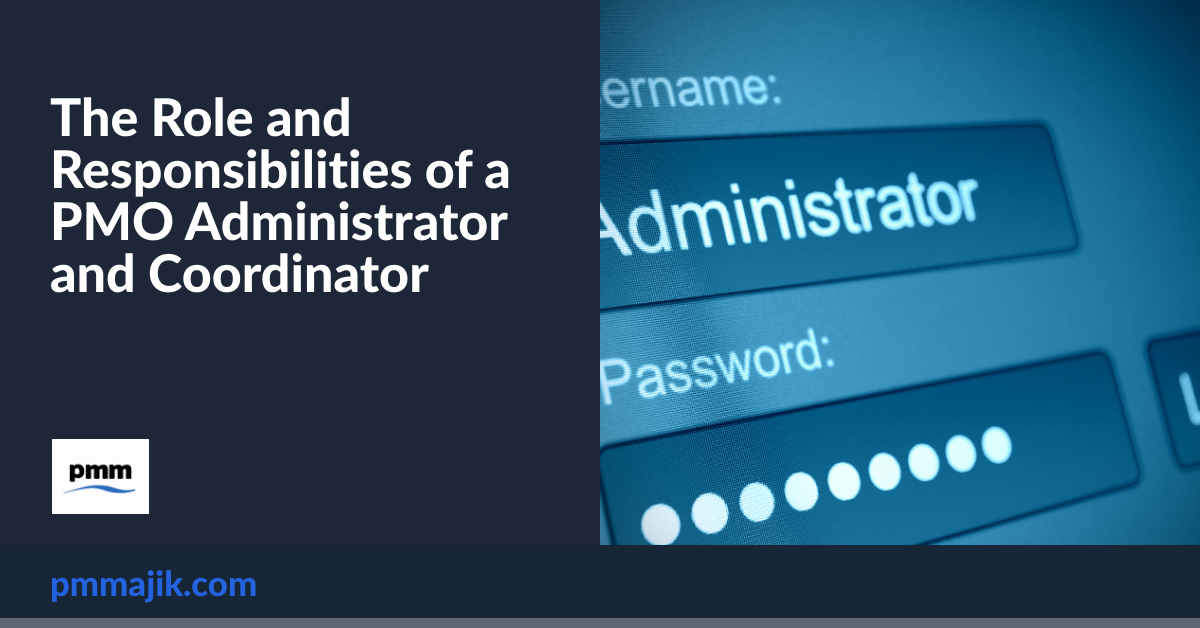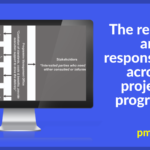Every project management office (PMO) needs to be organised and have people who keep the cogs whirring. That’s the role and responsibility of a PMO administrator or coordinator.
Having a person or team of people who keep the emails flowing, the paper moving, and the reports generating allows for project managers and PMO leaders and specialists to get on with their roles.
The role of a PMO administrator or coordinator is vital to the smooth functioning of a PMO, and it has a clear career path through the PMO. To understand the work of a PMO administrator, we’re going to look at:
- The role of a PMO administrator or coordinator and how they differ
- How to become an administrator in a PMO
- The responsibilities of a PMO administrator
- Where this role sits in the structure of a PMO
What’s the role of a PMO administrator and PMO coordinator?
A PMO administrator works across the projects that the office runs, offering administrative and secretarial support for the project and PMO functions.
The title of administrator and coordinator are often used interchangeably in PMOs. However, in larger PMOs, a coordinators role can be more specialised, still offering administrative support but focussed on a key area like resource planning or stakeholder management.
You may also see the same job responsibilities listed as PMO Support. The functions of that role will also broadly be the same as we look at here.
How do I become a PMO administrator?
The role of a PMO administrator doesn’t require a degree, but you’ll need experience with administration and secretarial support. You need to be:
- Organised
- Responsible
- Able to manage time effectively
- A strong communicator
Experience working in a project environment can also help with this type of role.
What are the responsibilities of a PMO coordinator or administrator?
Like with any office admin or coordination role, there are a range or organisational tasks. The key tasks of this role include:
- Scheduling meetings within the PMO and for projects and project managers, and taking minutes during meetings.
- Organising the timing and resources for training for project teams once signed off by the PMO leader.
- Maintaining the task and issue logs for the projects they administer.
- Completing cost sheets and timesheets for projects and recording project purchases.
- Updating project schedules and plans when changes get signed off by managers and leaders.
- Keeping records and handling the documentation that projects produce, and entering the data needed to generate PMO reports.
- Ensuring that projects have administrative resources such as the right process maps and documents to complete for each project stage.
- Communicating across the office, projects, and project stakeholders with information requests, schedule updates, and reports.
The KPIs of a PMO administrator can relate to the delivery of a project on time and on budget as well as having reports produced on time.
Where does a PMO administrator fit into the PMO structure?
Each office will have a slightly different set-up, but in general, an administrator is an entry-level job in the PMO structure. The functions an admin completes are vital to keep projects ticking over, and the person in the role will have skills around organisation and admin already.
If your office splits the roles of admins and coordinators, you can expect the coordinator to be on a higher pay scale and a rung up the hierarchy. A coordinator may be a lead for the admins, but they won’t be a reporting manager for them.
The work of PMO administrators and coordinators
You don’t want to have managers and leaders bogged down in paperwork and data entry, so having administrative and coordination roles in a PMO is important. They make sure that everything that gets decided higher up in the office gets followed up and implemented.
The role and responsibility of a PMO administrator or coordinator ensures projects that run through your office go smoothly, and that information and documentation is available in the right format and when needed.






